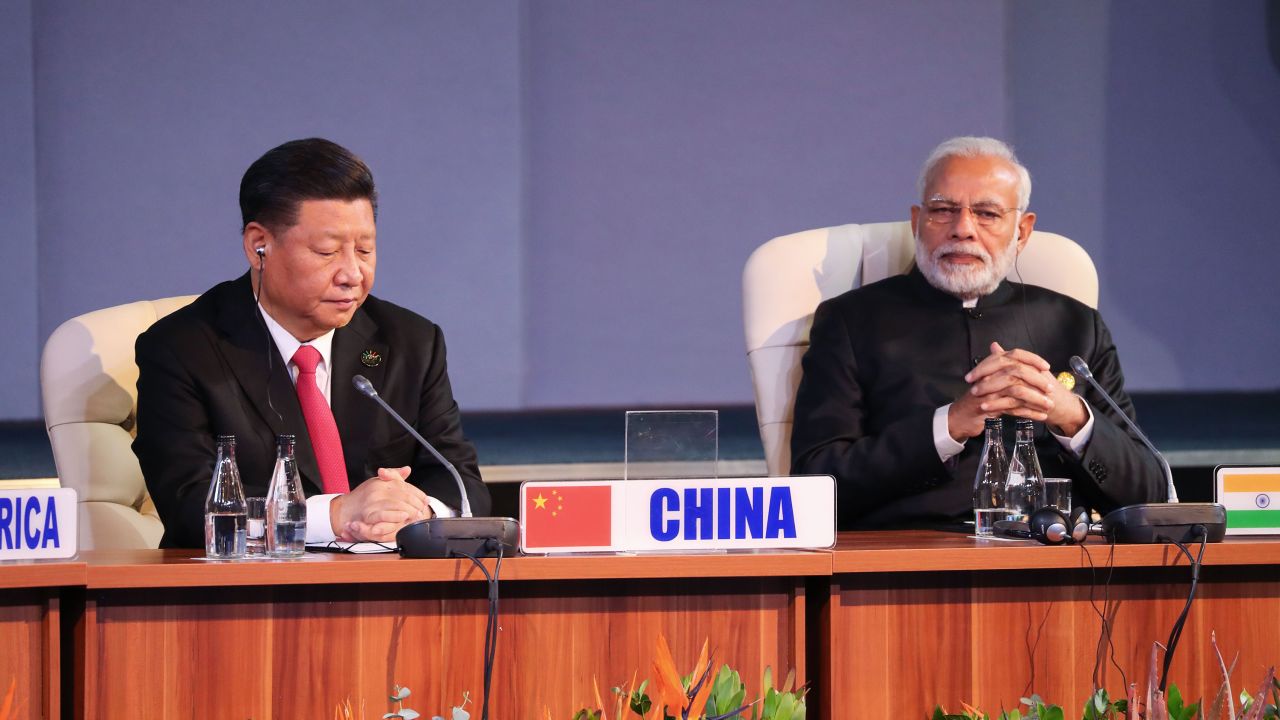Rhea Mogul

The Philippines has become the latest of China’s neighbors to object to its new national map, joining Malaysia and India in releasing strongly worded statements accusing Beijing of claiming their territory.
China published a new version of its national map on Monday, as it has regularly done since at least 2006, to correct what Beijing has in the past referred to as “problematic maps” that it claims misrepresent its territorial borders.
The Philippines said Thursday it “rejected” the map because of its inclusion of a dashed line around contested areas of the South China Sea that was subject to an international tribunal ruling in 2016 that found in favor of Manila.
The map is the “latest attempt to legitimize China’s purported sovereignty and jurisdiction over Philippine features and maritime zones (and) has no basis under international law,” the Philippines Foreign Affairs department said in a statement.
India was the first to complain on Tuesday when it lodged a “strong protest” about the inclusion of the Indian state of Arunachal Pradesh and the disputed Aksai-Chin plateau in Chinese territory.
“We have today lodged a strong protest through diplomatic channels with the China side on the so-called 2023 ‘standard map’ of China that lays claim to India’s territory,” India’s foreign secretary, Arindam Bagchi, said in a statement. “We reject these claims as they have no basis.”
Malaysia’s Ministry of Foreign Affairs also dismissed China’s “unilateral claims,” adding the southeast Asian nation “is consistent in its position of rejecting any foreign party’s claims to sovereignty, sovereign rights and jurisdiction on Malaysia’s maritime features.”
During a regular press briefing on Wednesday, Chinese Foreign Ministry spokesperson Wang Wenbin dismissed the complaints, saying the revisions were a “routine exercise of sovereignty in accordance with the law.”
“We hope relevant sides can stay objective and calm, and refrain from over-interpreting the issue,” he added.
Tensions with India
Since his rise to power in 2012, leader Xi Jinping has sought to transform China into a global superpower, pushing an aggressive foreign policy and making bolder moves in several key flashpoints across Asia.
The map dispute comes days after Indian Prime Minister Narendra Modi and Xi had a rare face-to-face meeting in South Africa where they agreed to “intensify efforts” to deescalate tensions at their contested border, a move that was seen as a step toward mending their fraught relationship.
It also came after India and China engaged in their 19th round of talks to resolve their border issue, and before a potential meeting between Modi and Xi at the G20 summit in New Delhi next week – if Xi attends.
While it appears, publicly at least, as if progress is being made in their border disputes, analysts say that might not always be the case.
“India and China do take every opportunity to hash out their differences, but it feels like one step forward, two steps back,” said Akhil Ramesh, a senior fellow from the Pacific Forum, a Honolulu-based foreign policy research institute focused on the Indo-Pacific.
“In this climate, while both sides may publicly express their interest in easing tensions, I do not see this happening. Both countries are working toward their own goals of being leaders of the global south.”
Borders have been a source of friction between New Delhi and Beijing for decades, and agitation in the region has spilled into war before, ending in Chinese victory in 1962. In the ensuing years, an ill-defined de facto border called the Line of Actual Control (LAC) has split the world’s most populous nations.
Tensions between the two countries soured significantly in 2020 after a deadly brawl in the Galwan Valley, close to Aksai Chin, an area controlled by China but claimed by both countries. Tensions have been simmering since and flared up last December when a clash between troops from both sides in the Tawang sector of Arunachal Pradesh resulted in minor injuries.
Pressure on Modi
While the tensions between Beijing and New Delhi play out, politicians from India’s main opposition Congress party have criticized Modi for downplaying the border issue.
“China is a habitual offender when it comes to renaming and redrawing maps of territories belonging to other countries,” said Congress chief Mallikarjun Kharge. “(The) Modi government must ensure that the illegal Chinese occupation of 2,000 square kilometres of Indian territory along the LAC must end.”
Speaking to reporters on Wednesday, lawmaker Rahul Gandhi, said: “I have been saying for years that the prime minister was lying when he said not one inch of land was lost in Ladakh.”
“All of Ladakh knows that China has grabbed our land. This map issue is very serious … the prime minister should speak about it,” he added.
Modi has largely avoided speaking publicly on the border issue, going as far as saying on live television shortly after the deadly 2020 clashes that, “No one has intruded and nor is anyone intruding.”
However, India has taken several steps to push back against perceived threats from China, including banning social media platform TikTok and other well-known Chinese apps, saying they pose a “threat to sovereignty and integrity,” while also moving to block Chinese telecoms giants Huawei and ZTE from supplying its 5G network.
Amid rising nationalism in both countries, concerns in New Delhi of Beijing’s increasing assertiveness have also bolstered India’s relationship with the United States, including via the Quadrilateral Security Dialogue, or Quad – a grouping of Japan, the US, India and Australia widely seen as a counterweight to China.
China earlier this year boycotted a G20 tourism meeting hosted by India in the Himalayan territory of Jammu and Kashmir, citing its opposition “to holding any kind of G20 meetings in disputed territory.” India and Pakistan both claim the disputed Kashmir region in its entirety.
No comments:
Post a Comment